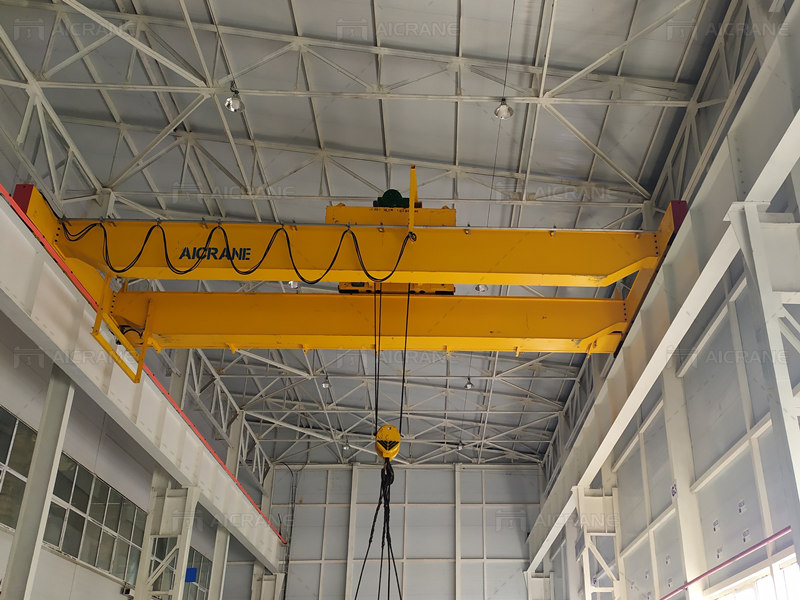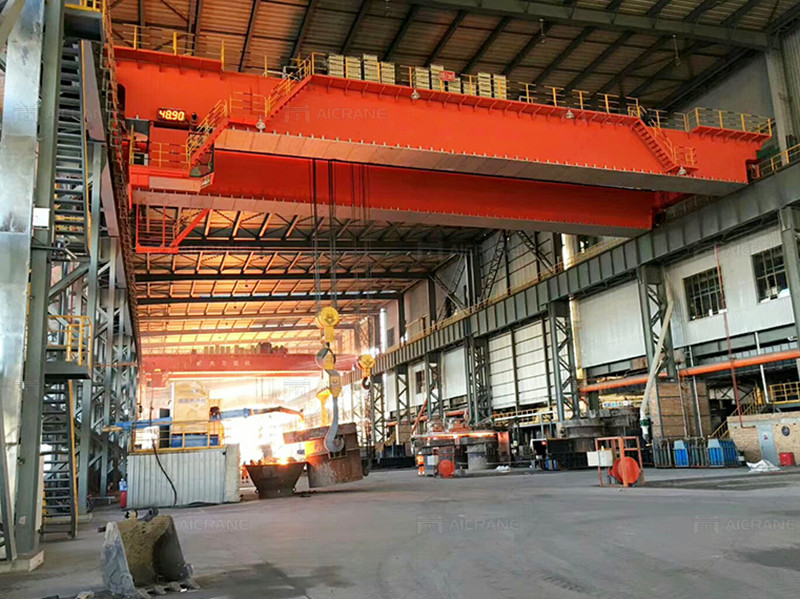Safety is paramount in any industrial setting, especially when it comes to heavy-duty material handling operations. Double girder overhead cranes, with their impressive lifting capacities and precision control systems, are vital assets in industries such as manufacturing, construction, and logistics. However, their effectiveness hinges not only on their lifting capabilities but also on the advanced safety features they incorporate. In this article, we will explore the advanced safety features of double girder overhead cranes and how they ensure the well-being of personnel, protect assets, and maintain operational integrity.
Overload Protection Systems
One of the most critical safety features of double girder overhead cranes is their overload protection systems. These systems are designed to prevent the crane from lifting loads beyond its rated capacity, which could lead to structural failure or accidents. Overload protection systems typically utilize sensors and load cells to monitor the weight of the load being lifted. If the load exceeds the preset limit, the system automatically triggers an alarm or stops the lifting operation, preventing potential accidents and injuries.
Emergency Stop Buttons
In emergency situations, swift action is essential to prevent accidents and minimize damage. Double girder overhead cranes are equipped with emergency stop buttons located at strategic points along the crane’s runway(мостовой кран цена) or control pendant. These buttons allow operators to immediately halt crane movements in case of an emergency, such as equipment malfunction, personnel injury, or hazardous conditions. The prompt activation of emergency stop buttons can prevent accidents from escalating and provide operators with valuable time to assess the situation and take appropriate action.

Limit Switches
Limit switches are another crucial safety feature found in double girder overhead cranes(Кран мостовой двухбалочный). These switches are installed at predetermined points along the crane’s travel path to prevent collisions with obstacles or structural elements. For example, travel limit switches are placed at the ends of the crane runway to prevent the crane from traveling beyond its designated limits. Similarly, hoisting limit switches prevent the hoist from lifting the load beyond a certain height. By enforcing safe operating parameters, limit switches help protect both the crane and its surroundings from damage and ensure smooth and safe crane operation.
Anti-Collision Devices
In facilities where multiple cranes operate in close proximity, the risk of collisions increases, posing a significant safety hazard. Anti-collision devices are designed to prevent such accidents by detecting the presence of other cranes or objects in the crane’s path and automatically adjusting its movements to avoid collisions. These devices use sensors, cameras, or radar systems to monitor the crane’s surroundings and provide real-time feedback to the crane’s control system. By minimizing the risk of collisions, anti-collision devices enhance safety in industrial environments and reduce the likelihood of damage to equipment and materials.
Load Moment Indicators
Load moment indicators are sophisticated safety features that provide real-time feedback on the crane’s load and operating conditions. These indicators calculate the crane’s stability and alert operators if the load being lifted exceeds safe operating limits. LMI systems typically display information such as load weight, boom angle, and radius, allowing operators to make informed decisions and adjust crane operations(Мостовой кран в цеху) accordingly. By providing crucial information on the crane’s stability and load capacity, load moment indicators help prevent tip-overs, rollovers, and other accidents, enhancing overall safety in material handling operations.

Anti-Sway Technology
Load sway, caused by the natural oscillation of the load during lifting and positioning, can pose a safety risk and compromise load stability. Anti-sway technology is designed to minimize load sway by automatically adjusting the crane’s movements to counteract the swinging motion of the load. This technology utilizes sensors and control algorithms to detect and correct load sway in real-time, ensuring precise and stable load positioning. By reducing load sway, anti-sway technology enhances safety, minimizes the risk of accidents, and improves operational efficiency in material handling operations.
Operator Training and Certification
While not a physical feature of the crane itself, operator training and certification are integral components of ensuring safe operation. Many manufacturers and industry organizations offer comprehensive training programs to educate crane operators on proper operating procedures, safety protocols, and equipment maintenance. By completing these training programs and obtaining certification, operators gain the knowledge and skills necessary to operate double girder overhead cranes safely and effectively. Properly trained operators are better equipped to identify potential hazards, respond to emergencies, and adhere to safety guidelines, thereby reducing the risk of accidents and injuries in the workplace. Visit website:https://www.aicrane.ru/
In conclusion, the advanced safety features of double girder overhead cranes play a critical role in ensuring the safety of personnel, protecting assets, and maintaining operational integrity in heavy-duty material handling operations. From overload protection systems and emergency stop buttons to limit switches, anti-collision devices, load moment indicators, and anti-sway technology, these safety features work together to mitigate risks, prevent accidents, and promote a safe and secure work environment. As industries continue to prioritize safety and compliance, the incorporation of advanced safety features in double girder overhead cranes remains essential for maintaining safe and efficient material handling operations.
